Byeongho Jo
Hybrid noise shaping for audio coding using perfectly overlapped window
Aug 24, 2023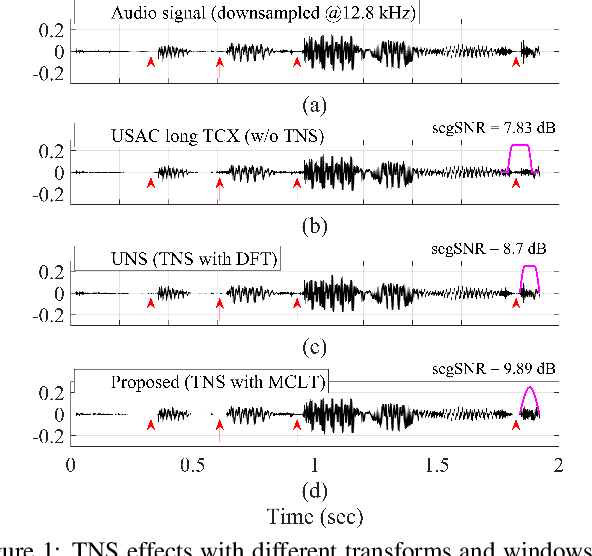
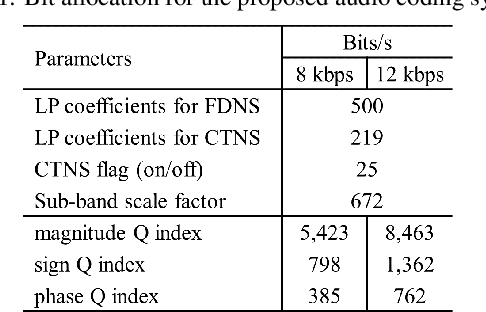
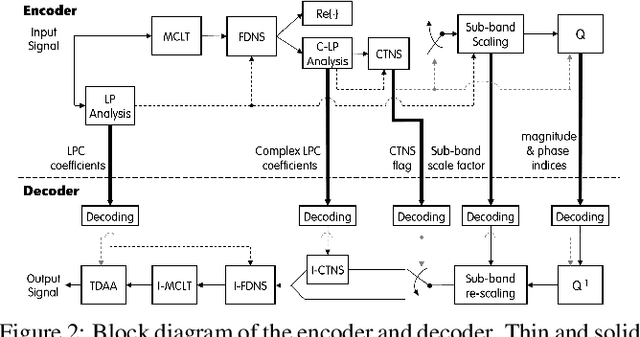
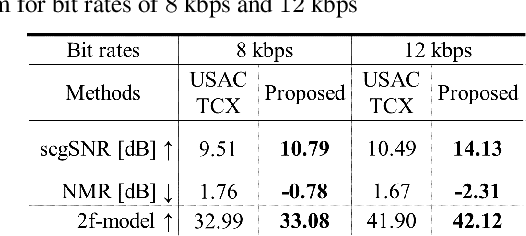
Abstract:In recent years, audio coding technology has been standardized based on several frameworks that incorporate linear predictive coding (LPC). However, coding the transient signal using frequency-domain LP residual signals remains a challenge. To address this, temporal noise shaping (TNS) can be adapted, although it cannot be effectively operated since the estimated temporal envelope in the modified discrete cosine transform (MDCT) domain is accompanied by the time-domain aliasing (TDA) terms. In this study, we propose the modulated complex lapped transform-based coding framework integrated with transform coded excitation (TCX) and complex LPC-based TNS (CTNS). Our approach uses a 50\% overlap window and switching scheme for the CTNS to improve the coding efficiency. Additionally, an adaptive calculation of the target bits for the sub-bands using the frequency envelope information based on the quantized LPC coefficients is proposed. To minimize the quantization mismatch between both modes, an integrated quantization for real and complex values and a TDA augmentation method that compensates for the artificially generated TDA components during switching operations are proposed. The proposed coding framework shows a superior performance in both objective metrics and subjective listening tests, thereby demonstrating its low bit-rate audio coding.
Audio coding with unified noise shaping and phase contrast control
Apr 17, 2023Abstract:Over the past decade, audio coding technology has seen standardization and the development of many frameworks incorporated with linear predictive coding (LPC). As LPC reduces information in the frequency domain, LP-based frequency-domain noise-shaping (FDNS) was previously proposed. To code transient signals effectively, FDNS with temporal noise shaping (TNS) has emerged. However, these mainly operated in the modified discrete cosine transform domain, which essentially accompanies time domain aliasing. In this paper, a unified noise-shaping (UNS) framework including FDNS and complex LPC-based TNS (CTNS) in the DFT domain is proposed to overcome the aliasing issues. Additionally, a modified polar quantizer with phase contrast control is proposed, which saves phase bits depending on the frequency envelope information. The core coding feasibility at low bit rates is verified through various objective metrics and subjective listening evaluations.
Robust Sound Source Localization considering Similarity of Back-Propagation Signals
Feb 25, 2019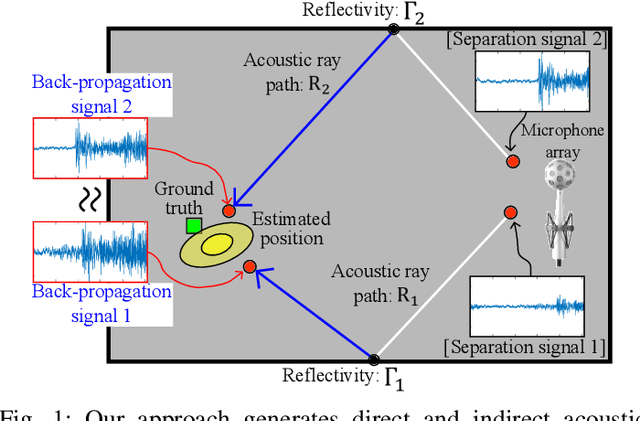
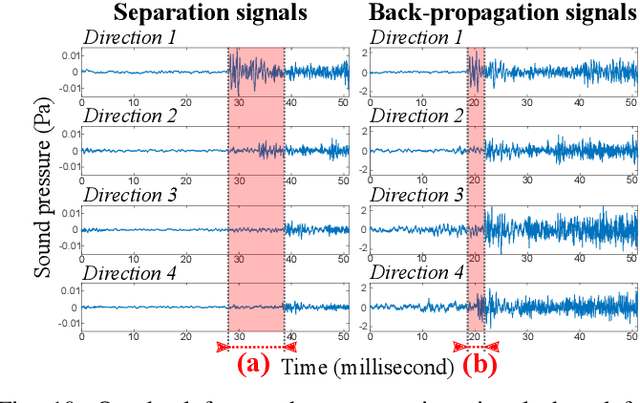

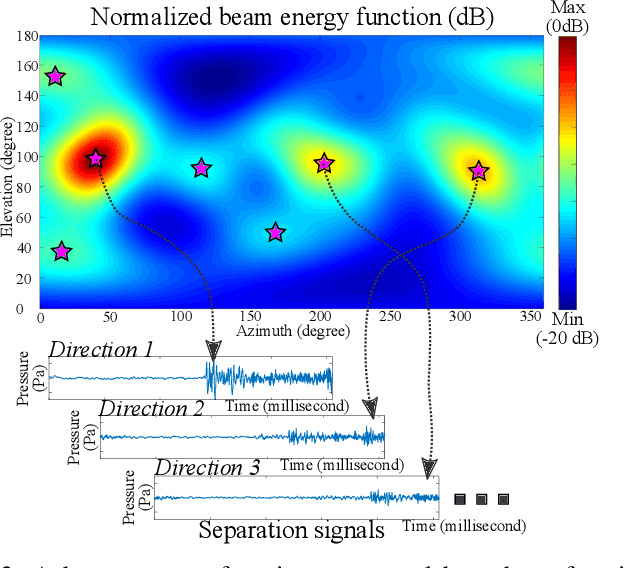
Abstract:We present a novel, robust sound source localization algorithm considering back-propagation signals. Sound propagation paths are estimated by generating direct and reflection acoustic rays based on ray tracing in a backward manner. We then compute the back-propagation signals by designing and using the impulse response of the backward sound propagation based on the acoustic ray paths. For identifying the 3D source position, we suggest a localization method based on the Monte Carlo localization algorithm. Candidates for a source position is determined by identifying the convergence regions of acoustic ray paths. This candidate is validated by measuring similarities between back-propagation signals, under the assumption that the back-propagation signals of different acoustic ray paths should be similar near the sound source position. Thanks to considering similarities of back-propagation signals, our approach can localize a source position with an averaged error of 0.51 m in a room of 7 m by 7 m area with 3 m height in tested environments. We also observe 65 % to 220 % improvement in accuracy over the stateof-the-art method. This improvement is achieved in environments containing a moving source, an obstacle, and noises.
 Add to Chrome
Add to Chrome Add to Firefox
Add to Firefox Add to Edge
Add to Edge